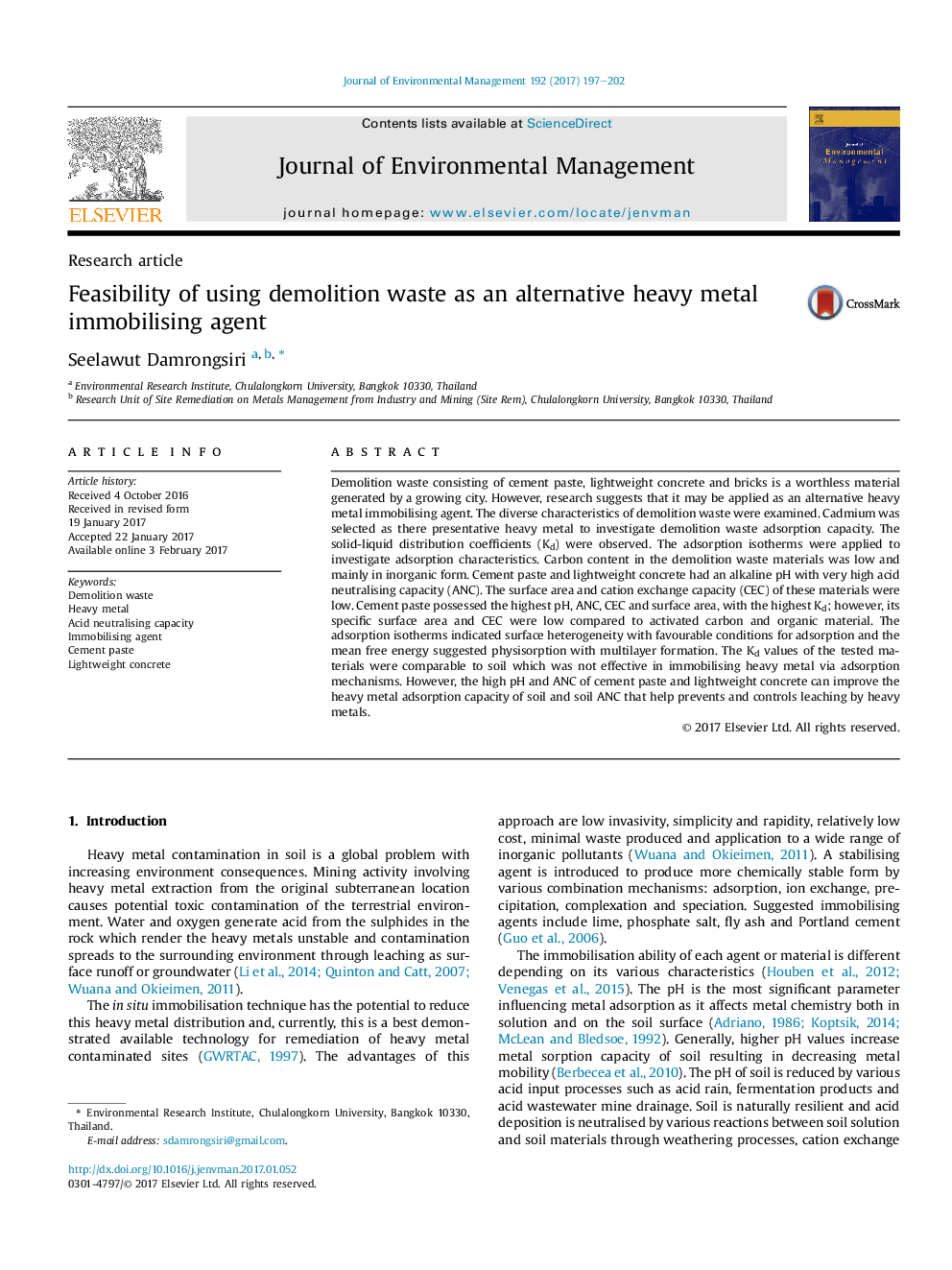| Article ID | Journal | Published Year | Pages | File Type |
|---|---|---|---|---|
| 5117043 | Journal of Environmental Management | 2017 | 6 Pages |
â¢Specific surface area and cationic exchange capacity of study materials were low.â¢The surfaces of cement paste, lightweight concrete and bricks were heterogeneous.â¢The adsorption of cadmium was mainly physisorption with multilayer formation.â¢The cadmium adsorption capacities of the study materials at neutral pH were low.â¢High pH and acid neutralising capacity of cement paste assisted in immobilisation.
Demolition waste consisting of cement paste, lightweight concrete and bricks is a worthless material generated by a growing city. However, research suggests that it may be applied as an alternative heavy metal immobilising agent. The diverse characteristics of demolition waste were examined. Cadmium was selected as there presentative heavy metal to investigate demolition waste adsorption capacity. The solid-liquid distribution coefficients (Kd) were observed. The adsorption isotherms were applied to investigate adsorption characteristics. Carbon content in the demolition waste materials was low and mainly in inorganic form. Cement paste and lightweight concrete had an alkaline pH with very high acid neutralising capacity (ANC). The surface area and cation exchange capacity (CEC) of these materials were low. Cement paste possessed the highest pH, ANC, CEC and surface area, with the highest Kd; however, its specific surface area and CEC were low compared to activated carbon and organic material. The adsorption isotherms indicated surface heterogeneity with favourable conditions for adsorption and the mean free energy suggested physisorption with multilayer formation. The Kd values of the tested materials were comparable to soil which was not effective in immobilising heavy metal via adsorption mechanisms. However, the high pH and ANC of cement paste and lightweight concrete can improve the heavy metal adsorption capacity of soil and soil ANC that help prevents and controls leaching by heavy metals.
